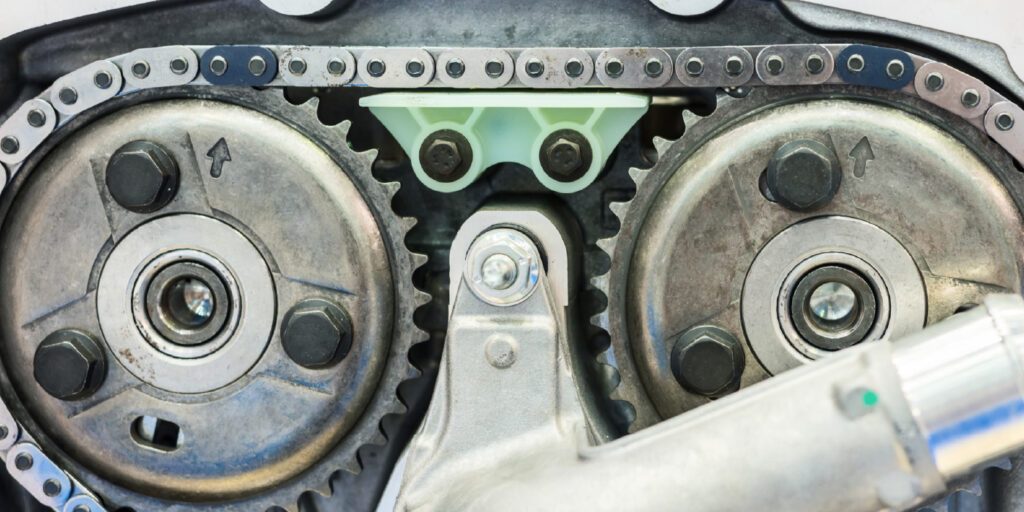By Larry Carley
Technical Editor
A/C compressors are usually the most expensive A/C component to replace, followed by condensers and evaporators. So it is very important to make sure (1) the compressor is really bad and needs to be replaced, (2) the cause of the compressor failure has been identified and fixed so the new compressor does not fail for the same reason, and (3) the new compressor is installed properly and lubricated with the correct type of compressor oil.
The most common cause of compressor failure is inadequate lubrication. This may be the result of a refrigerant leak that allows compressor oil to leak out of the system. Typical leak points are hoses, hose and pipe connections (O-rings and flange gaskets), the evaporator, condenser or the compressor shaft seal. Leak detection dye or an electronic leak detector should be used to find the leak so it can be repaired.
Lubrication problems can also be caused by a blockage (typically the orifice tube) that prevents refrigerant and oil from circulating through the A/C system.
Using the wrong type of compressor oil for the application or the wrong amount can also lead to premature wear and failure. There are various grades of PAG oil, and using the wrong grade can cause problems. Always use the type of PAG oil specified by the compressor manufacturer or vehicle manufacturer. Use only the amount specified for the compressor. Adding too much oil can cause cooling problems.
Mineral-based compressor oil is only for older vehicles (pre-1995) with R-12 compressors, and should never be used with a compressor in an R-134 A/C system.
A compressor may also fail if there is sludge or debris inside the A/C system. Moisture contamination of the refrigerant can form acids that attack metal surfaces and form sludge inside the system. Over time, this can gum up and damage the compressor. If the system contains any sludge or debris, the hoses, evaporator and condenser should all be flushed out to remove the contaminants. Note: some condensers cannot be flushed due to the way they are constructed, so replacement is necessary if the condenser is contaminated.
A compressor may also have to be replaced if it is leaking, making excessive noise or not working correctly because of an internal valve or piston failure. Some compressors are naturally noisier than others, but loud knocking noises can sometimes be caused by air in the system. The cure in this case is not to replace the compressor, but to recover the refrigerant from the system, then vacuum purge the system for 30 minutes to an hour with an A/C vacuum pump to remove the unwanted air. If the compressor is still making noise after the system has been purged and recharged, it probably needs to be replaced.
When a compressor fails, it may spew out metallic debris. Most of the junk ends up in the condenser, but some may travel as far as the orifice tube or be blown back into the suction hose. If this junk is not flushed out of the system, it can be sucked into the new compressor and cause it to fail, too.
When a compressor is replaced, the accumulator or receiver/drier should also be replaced. The accumulator or receiver/drier contains a bag of desiccant that absorbs moisture. This helps to protect the A/C system against sludge. But over time, the desiccant becomes saturated and cannot hold any more water. If the A/C system has been opened up for repairs, or has lost its charge of refrigerant, humidity in the outside air can enter the system and overload the desiccant. That’s why it needs to be replaced.
Another component that should also be changed when replacing a compressor is the orifice tube. This small plastic tube meters refrigerant into the evaporator. If it plugs up, it can block the flow of coolant, causing the A/C to stop blowing cold air. It can also starve the new compressor for lubrication because the oil circulates with the refrigerant.
A couple of preventive measures can also be taken to protect a new compressor. One is to install an in-line filter in the high pressure liquid line to catch any debris that might come out of the condenser. Another is to install an inlet screen filter in the suction hose to stop any debris from being sucked into the compressor.
Other A/C components that may also have to be replaced when changing a compressor include the magnetic clutch (if it is worn or slipping), the drive belt and A/C hoses. Refrigerant that contains leak detection dye can be used to recharge the system. After the dye circulates awhile, it will reveal any leaks that might have been missed and need to be repaired.











